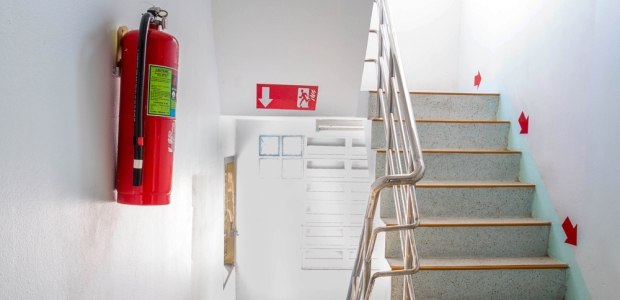
Getting Ready for Emergencies
The Plan-Do-Check-Act model, which both DHS and FEMA use, really helps when implementing and practicing your emergency plans.
- By Jerry Laws
- Aug 01, 2016
Two session presenters at this year's ASSE Safety 2016 conference & expo in June gave their audiences a wealth of information about fire safety resources, important standards, and best practices for company preparedness and employee safety prior to and during a significant fire event.
Using the International Fire Code
Paul Gantt, CSP, CET, CHST, president and founder of Safety Compliance Management Inc.,1 delved into the International Code Council's International Fire Code, which currently is adopted in 42 states and some local jurisdictions. He stressed in his presentation both the value and utility of the document's chapters and 13 appendices, its referenced standards (Chapter 80), and also how easy it is to use online through ICC public access.2
Most states have not yet adopted the current 2015 version, he said. "It's a tool within your toolbox that you don't know is there . . . . It can be incredibly valuable to you," Gantt said. "These [ICC] codes can be really challenging, but there are some really simple steps."
He explained that some of the International Fire Code's provisions are stronger than comparable OSHA standards, notably its provisions for hot work (Chapter 35), fire safety precautions that are required during construction and demolition operations (Chapter 33), and the larger fire extinguishers the code requires in powered industrial truck battery charging areas and extinguishers required for roofing work that uses kettles and hot tar.
The code's chapters are specific to the types of facilities and industries they cover, so users should first check for the right chapter and then read its scope and consult the definitions chapter (Chapter 2) to ensure they know whether a provision does apply to their facility, he explained. Gantt cited as an example a California requirement for disposing of combustible materials daily—the scope shows it applies only to combustible waste materials, so the requirement does not apply to oily rags from a kitchen, which are to be cleaned and are not waste material, he said.
Gantt spent some of his time discussing the elements of Chapter 4, Emergency Planning and Preparedness, saying it explains by type of occupancy whether a business needs to have an emergency plan and an evacuation plan in place, how frequently it needs to conduct fire drills, providing and documenting employee training, etc., he said.
Practice, Practice, Practice
"Practicing Emergency Preparedness: The Key to a Successful Failure" was the title of the Safety 2016 presentation by Gabriel Miehl, CSP, CFPS, SGE, of GE Transportation in Erie, Pa. He is a member of the Erie County Hazardous Materials Response Team and discussed some of its training exercises and real-life responses, including a multi-agency response to a major fire inside a building storing mattresses. The team still gets many suspicious envelope calls, he said.
"You never know what’s going to happen. You practice," he said. "Planning [and] practice can really make for a good response."
Miehl said employees at one area company "were adamant" that, during a fire or other emergency, they should evacuate to the roof of their seven-story building. While Erie County has a 102-foot ladder, actually it could only be used to rescue people around 50 feet up because the truck must be parked at some distance from the building in case it should collapse, he explained, so the team brought in the local fire chief to sit down with those employees and explain why a roof rescue is not feasible.
The Plan-Do-Check-Act model, which both DHS and FEMA use, really helps when implementing and practicing your plans, he said, adding that we've learned that an organization that does not have this planning and practice system in place does not have sustainability in its program.
"You've got to make that business case [to upper management]: It's an investment. That way, if things go bad—and they will—it's part of your process," he said.
Miehl discussed several NFPA standards and resource materials, including NFPA 1600, Standard on Disaster/Emergency Management and Business Continuity/Continuity of Operations Programs; OSHA's emergency action plans standard, 1910.38; ISO standards; USFA's Coffee Break Training; FEMA's free hazmat tabletop exercises manual; and the Homeland Security Exercise and Evaluation Program's guidance and materials, which include an exercise guide.3
For example, the OSHA standard specifies that, before implementing an emergency action plan—which must be in writing if the company employs more than 10 people, must be kept in the workplace, and must be available for employees to review—the employer "must designate and train employees to assist in a safe and orderly evacuation of other employees."
"Sometimes we can work some of you guys—the public—into our training. We don't mind that," he said. "You don't have to be perfect [in your practice]. Just be simple, be direct, so you can get done what you need to get done."
And he said the most important part of it is for the company to critique its practice, so make certain your employees feel comfortable in providing candid feedback.
References
1. www.scm-safety.com/, San Ramon, Calif.
2. http://codes.iccsafe.org/
3. https://www.preptoolkit.org/web/hseep-resources
This article originally appeared in the August 2016 issue of Occupational Health & Safety.